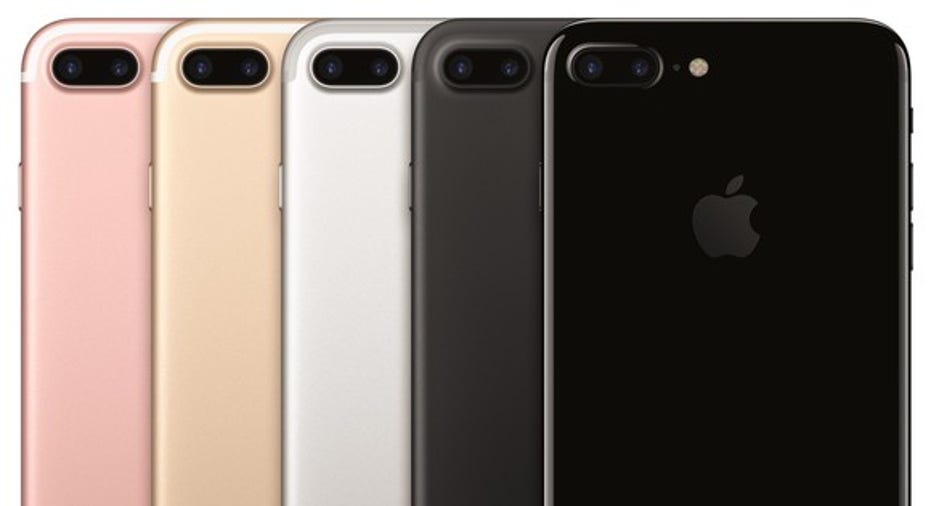2 Disappointments in the Apple Inc. iPhone 7

Image source: Apple.
Generally speaking, I really like Apple's (NASDAQ: AAPL) latest iPhone 7 and 7 Plus series. The phones offer leadership specifications, they look quite nice (especially in those two new finishes), and I expect that the overall user experience of these devices will be unmatched by any rival smartphones.
Apple has done an incredibly good job with these phones, and I look forward to seeing what else comes out of the iDevice maker's iPhone innovation pipeline in the years to come.
That being said, although these new devices are extremely compelling (I pre-ordered a black iPhone 7 Plus this morning, so I put my money where my mouth is), there are two aspects of the new device that are a bit disappointing.
No True Tone display
Earlier this year, Apple introduced a new 9.7-inch iPad Pro. One of the best features of this device is something that Apple markets as a "True Tone" display. The idea behind this is simple: The iPad Pro is able to sense the color temperature of one's surroundings and dynamically adjust the color temperature of the display to match.
It's a really awesome feature and one that I had expected (and hoped) would make it into the new iPhone. Unfortunately, Apple omitted it from both the iPhone 7 and iPhone 7 Plus.
It's not clear whether Apple faced some technical hurdles getting this technology intothe new phones, or whether it was an issue with cost. Nevertheless, this is a feature that I hope Apple brings to a future iPhone as soon as possible.
Display doesn't bring contrast ratio improvements
The good news is that the iPhone 7 and iPhone 7 Plus employ displays that employthe wider DCI-P3 color gamut, a significant improvement from the mere sRGB color space coverage of prior iPhone displays.
Apple's new cameras also take photos in wide color, so iPhone 7 and 7 Plus users should be able to quickly generate a ton of content that takes advantage of that new display. It's awesome.
However, one area that Apple didn't seem to improve is the contrast ratios of the displays. According to Apple's tech specs page, the iPhone 7's display delivers a contrast ratio of 1400:1, while the display on the iPhone 7 Plus offers a slightly worse 1300:1 contrast ratio.
This essentially means that the color black is no deeper on these new iPhones than it was on the last two iPhones.
This obviously isn't a deal-breaker -- I still expect the displays on these new iPhones to look quite good -- but it would have been nice to see some enhancements on this front.
As a consolation, next year's iPhone is expected to employ an OLED display. This means that the contrast ratios on those phones should technically be "infinite" -- a marked improvement from the displays on this year's iPhones.
The good news for iPhone 7 and iPhone 7 Plus
To be blunt, the fact that I only found these two things truly disappointing is extremely encouraging -- I like to think that I'm pretty critical when it comes to what I want from a flagship smartphone. With the iPhone 7, I just can't find much to complain about!
It'll be interesting to observe how well these smartphones do in the marketplace, but I would hope that they fare better than the prior generation iPhone 6s series because they really are that much better.
A secret billion-dollar stock opportunity The world's biggest tech company forgot to show you something, but a few Wall Street analysts and the Fool didn't miss a beat: There's a small company that's powering their brand-new gadgets and the coming revolution in technology. And we think its stock price has nearly unlimited room to run for early in-the-know investors! To be one of them, just click here.
Ashraf Eassa has no position in any stocks mentioned. The Motley Fool owns shares of and recommends Apple. The Motley Fool has the following options: long January 2018 $90 calls on Apple and short January 2018 $95 calls on Apple. Try any of our Foolish newsletter services free for 30 days. We Fools may not all hold the same opinions, but we all believe that considering a diverse range of insights makes us better investors. The Motley Fool has a disclosure policy.



















